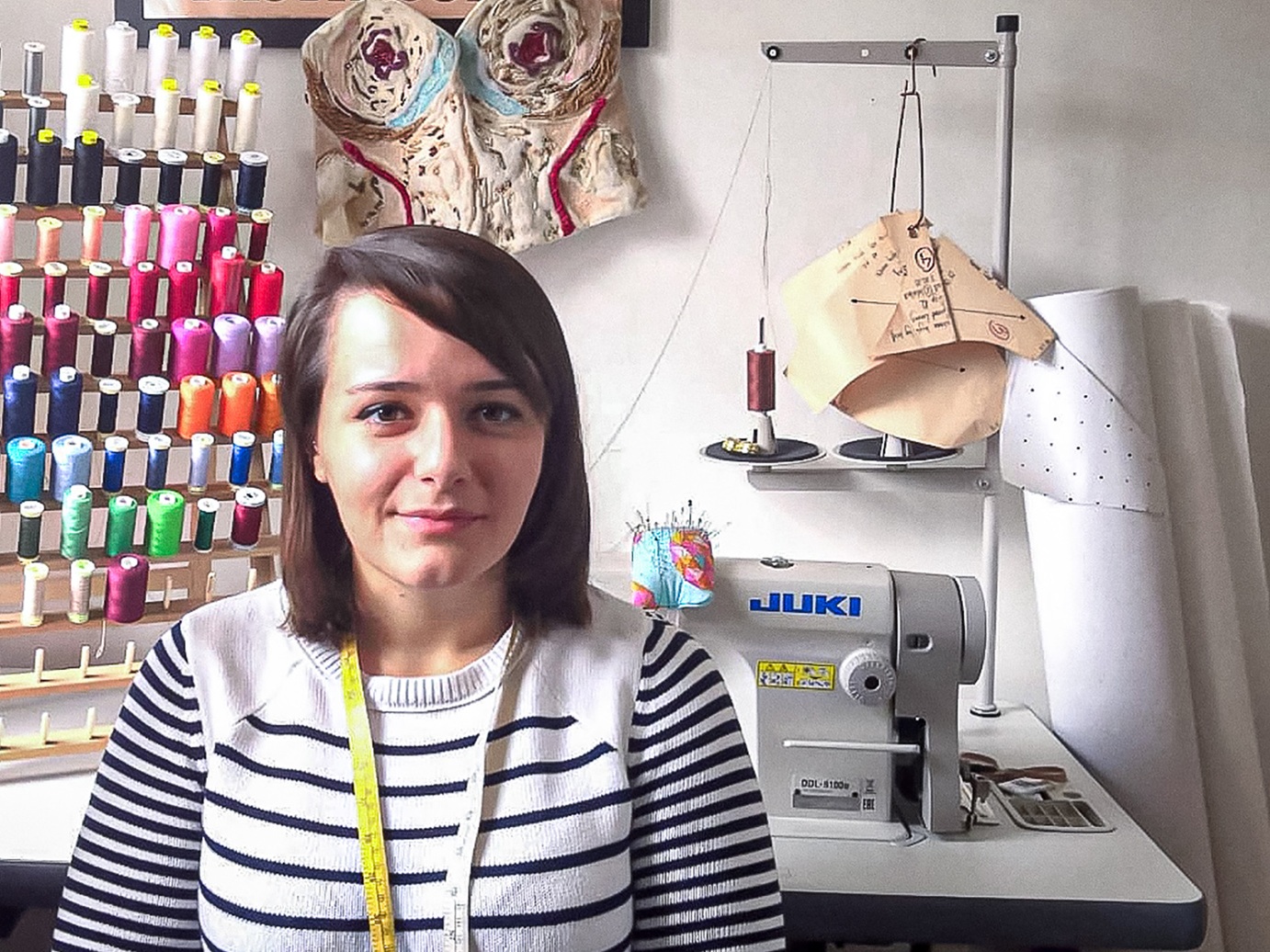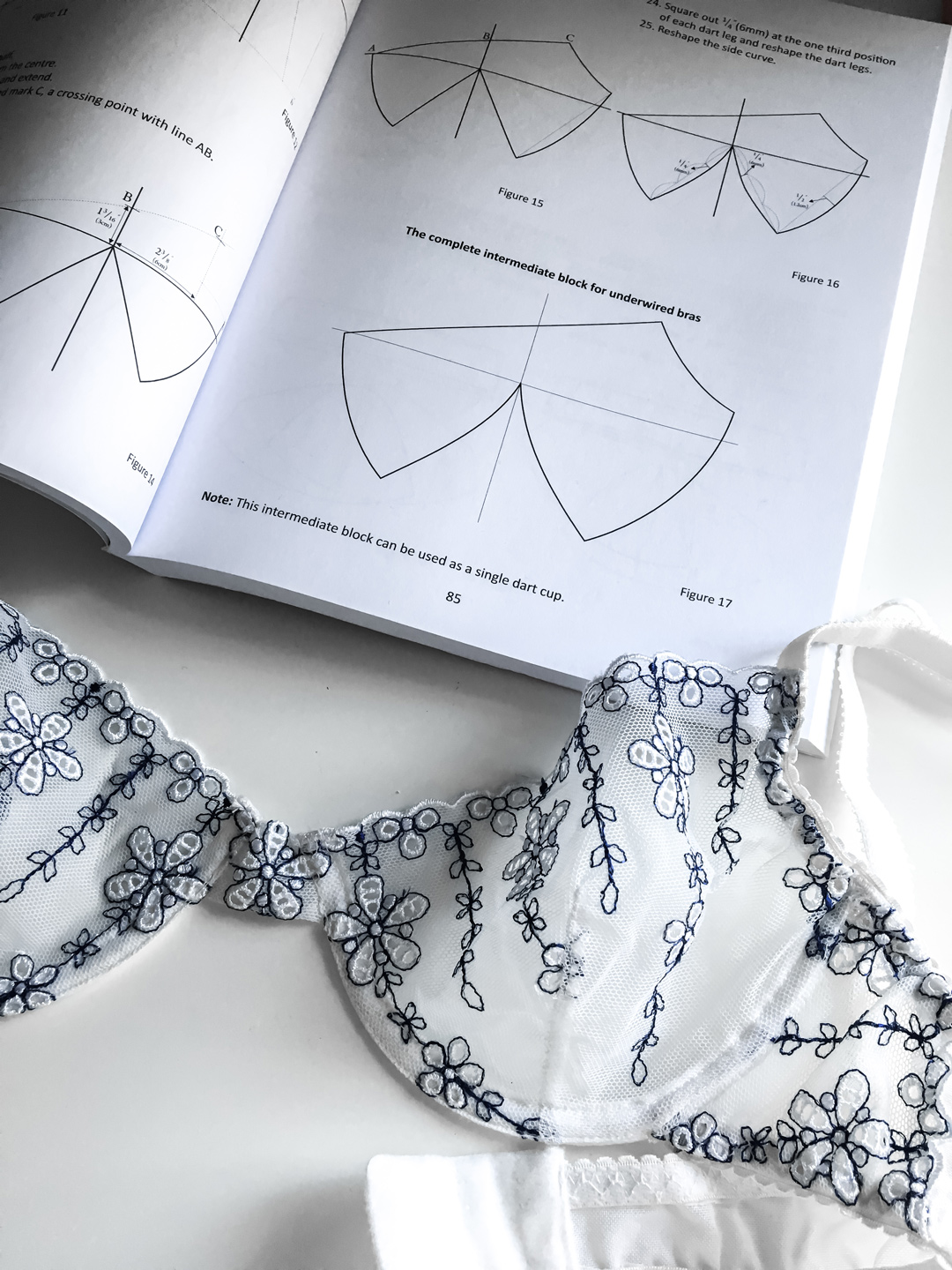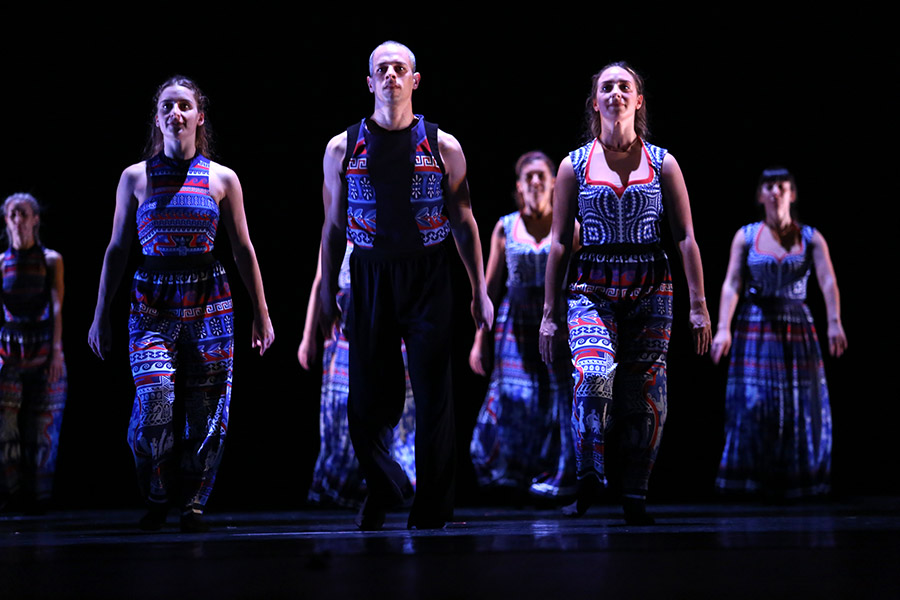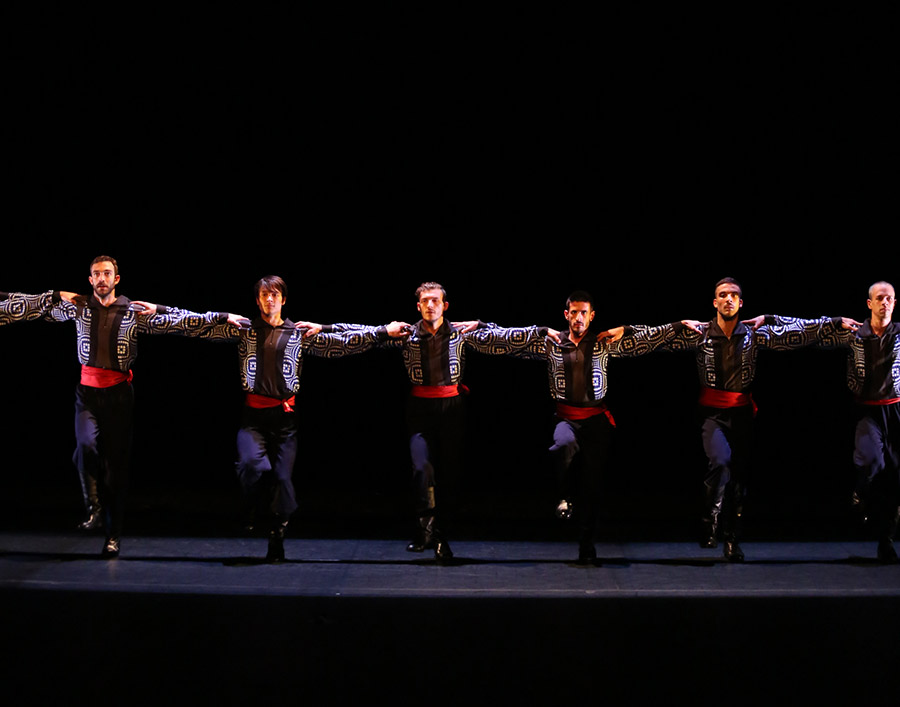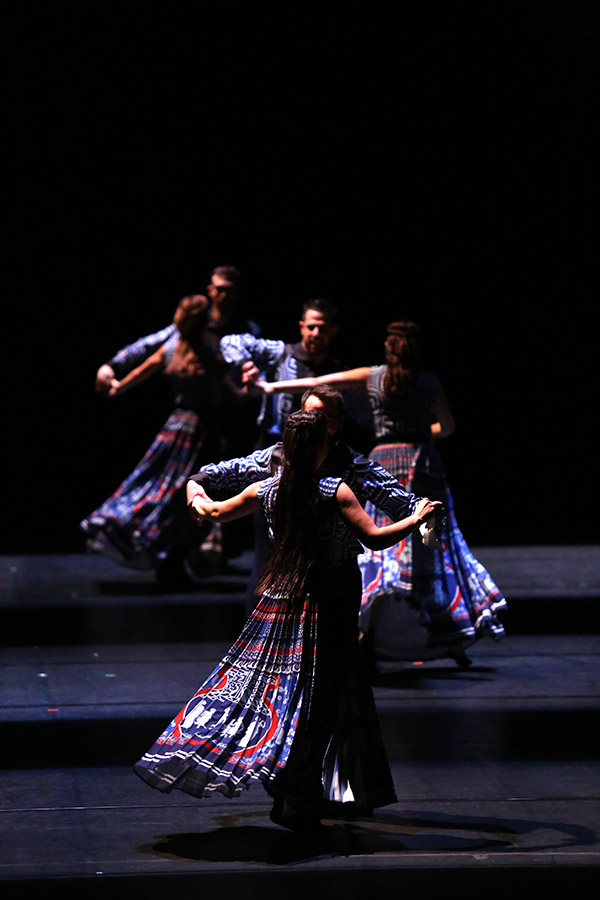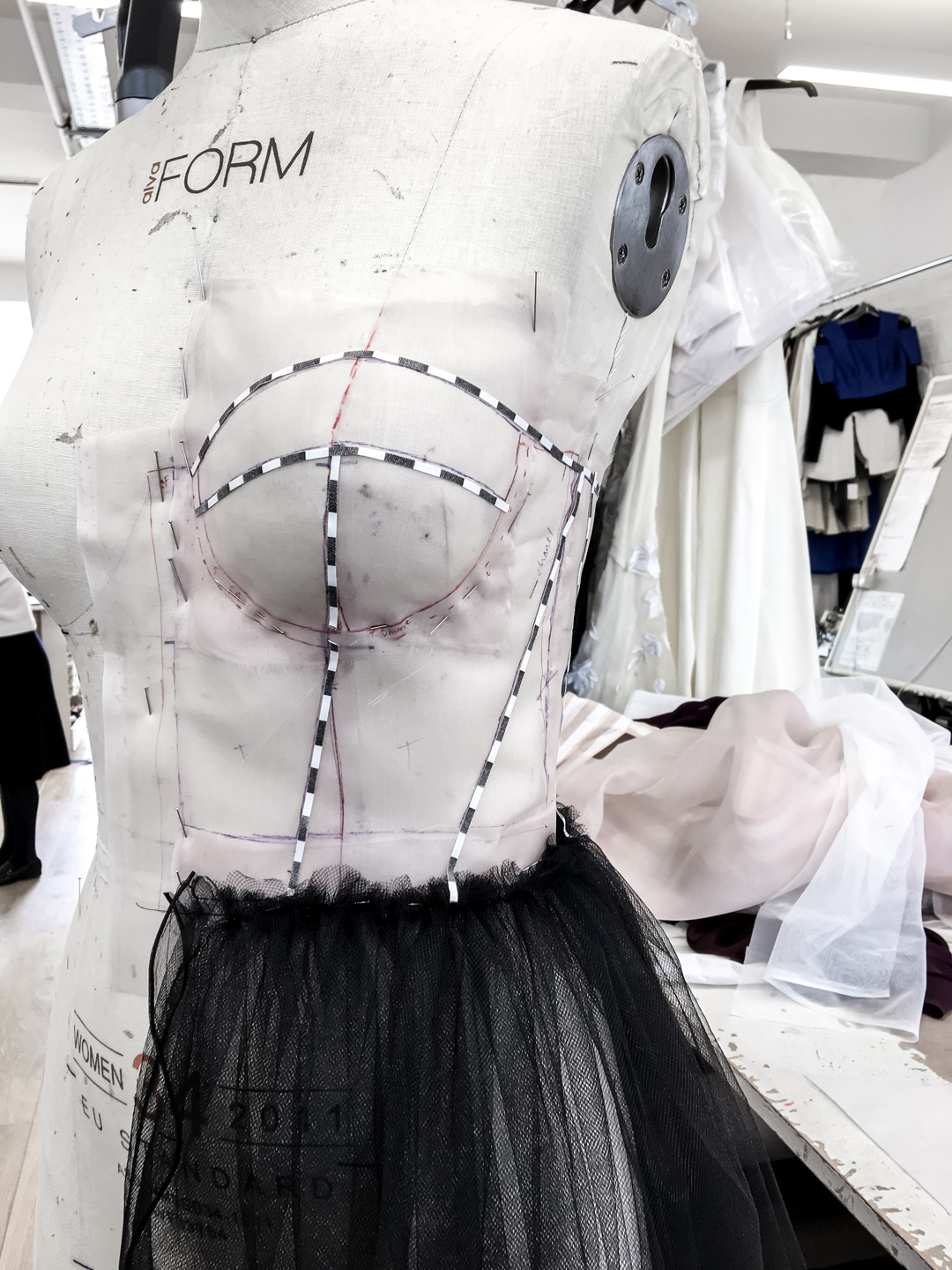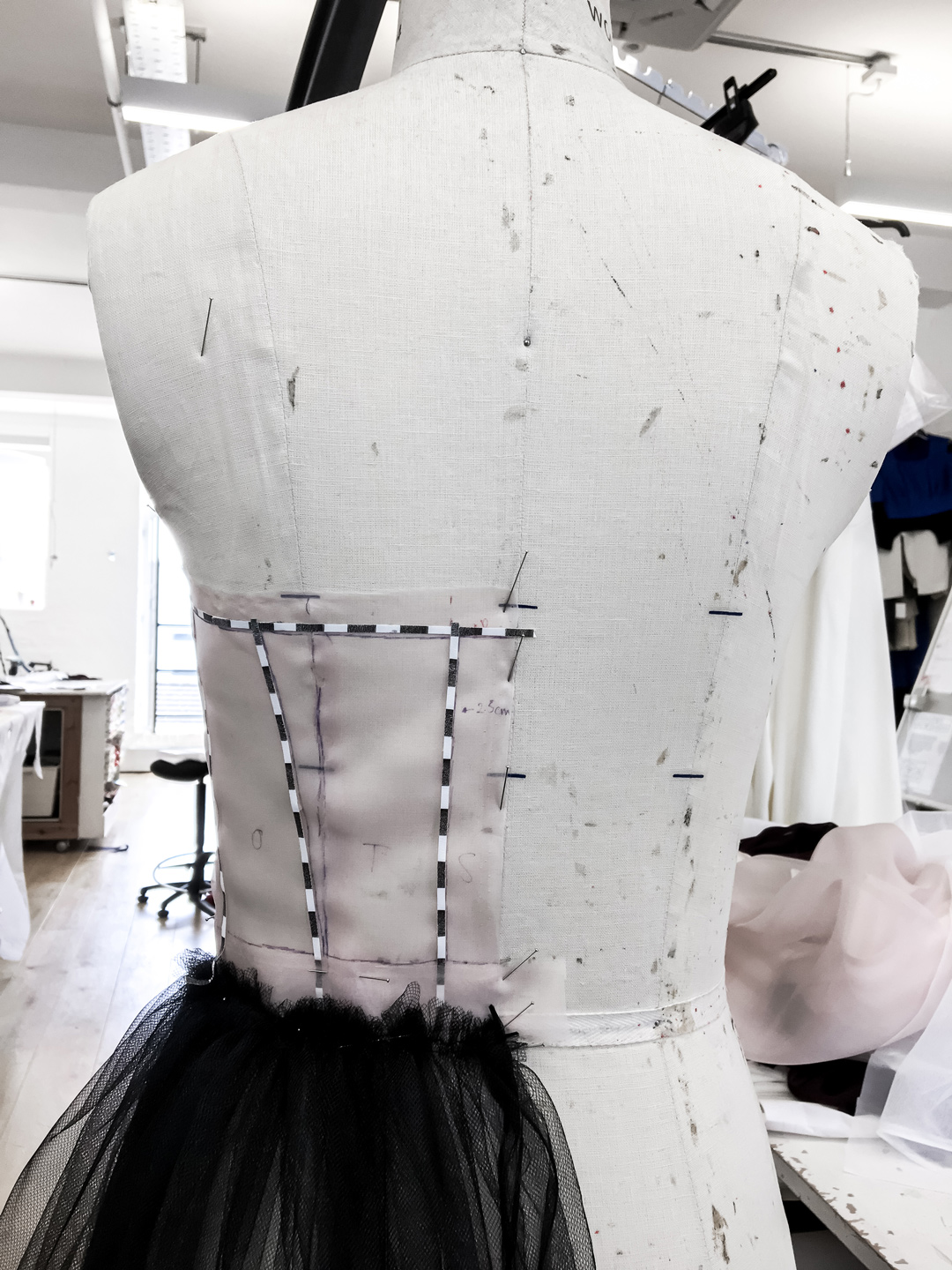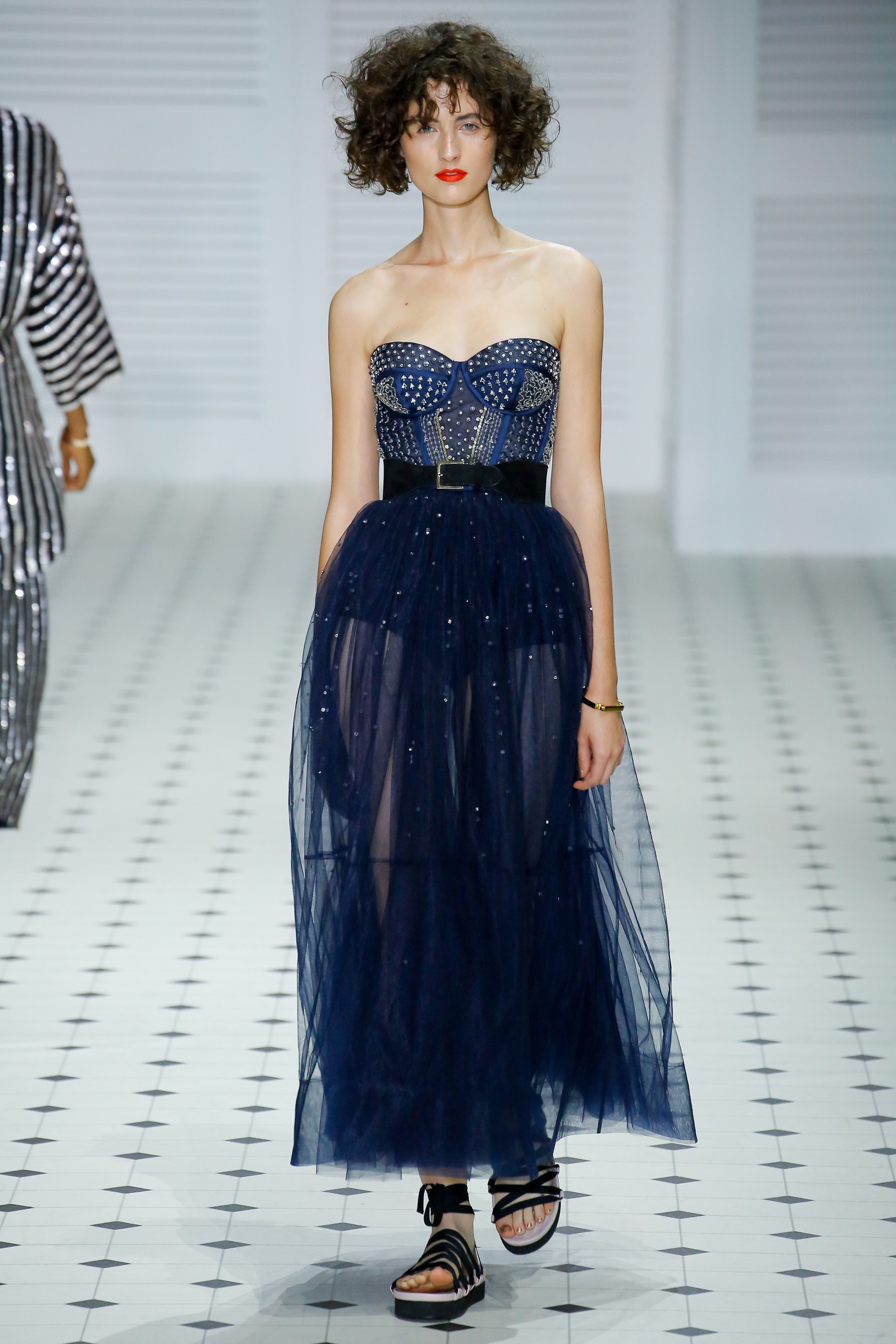SARA - LINGERIE PATTERN CUTTER
I met Sara when we worked together at Mary Katrantzou. She trained in lingerie and contour fashion at university, and now works as a freelance pattern cutter. However she stays true to her roots, as her favourite garment to pattern cut is still a corset. She generously shared lots of tips to improve your lingerie cutting and sewing skills. She also shares her tips on which books to check out if you are serious about drafting your own underwear patterns. Thanks for all you advice Sara!
Can you explain what your job role is?
I am currently a women's wear pattern cutter, but at university I trained in lingerie and contoured fashion.
So why did you choose to take the fashion contour course at university?
I heard about how many students that general fashion courses turn out, and I thought that getting a job in the fashion industry was going to be incredibly difficult. I saw that there are only two universities in the whole of the UK that do the fashion contour course. I've always been interested in underwear, in GCSE textiles my final products were always corsets, I made my first corset when I was 14, so I've just had a love for corsetry, underwear and burlesque dancing and thought it was the perfect degree for me. I loved how intricate and accurate underwear was because a couple of millimetres out and you're already into a new size. The level of accuracy definitely improved my pattern cutting skills because it is so precision based.
“I've always been interested in underwear, I made my first corset when I was 14, so I've just had a love for corsetry, underwear and burlesque dancing”
How and where did you learn your skill?
I applied for both universities in the UK that did contour fashion. So it was De Montfort University and London College of Fashion (LCF). l got in to LCF, I did four years there with a sandwich year. That's where I learned how to pattern cut and the whole design process. Pattern cutting was definitely my favourite bit of the course and the path I saw myself following. Then in my sandwich year, I did a six month internship with Temperley London. They taught me how to start pattern cutting for women's wear, how to drape on a stand and I started using Gerber. That's how the love of pattern cutting further developed and it sort of gradually grew from lingerie to gowns.
So when you were at that internship was then then a part of you that was thinking, oh, I could go down the woman's wear route?
What put me off a bit in terms of underwear as a career was that it is usually all supplier based in the UK. Obviously pattern cutting for underwear is very time consuming, so a lot of companies just don't have the time or the resources to create new patterns with every new design/season. Once they've approved a block, they'll just change it in fabrications, so it is not very creative in that sense. With women's wear it was more creative, designs always changed, seasons changed, trends changed. The underwear background helped me because I was more accurate whenever there was a design that had a basque or a corset involved, the designers usually liked the way I did things, so contoured and fitted styles would be given to me.
How long have you been in the fashion industry and where have you worked?
I've been in industry for two and a half years. When I graduated, Temperley London asked me to come back, so I did a year apprenticeship with them. Then I did six months at Victoria Beckham as a production Gerber pattern cutter, and then I went freelance. Since then I've been at ASOS, Mary Katrantzou, Richard Pattinson, which is a men's wear studio. With him I did patterns for J.W. Anderson, Band of Outsiders, Aquascutum and Wales Bonner. And now I'm at Erdem.
The fashion industry is notoriously hard to get into. How did you get your foot in the door?
I was very, very, very lucky. I did a six months internship at Temperley London, but I remained good friends with all of them, and I kept coming back for shows. To get the job originally, I was just very silly (well.. myself) in my interview! Instead of being very professional, when I get nervous I start talking a lot and that's how they remembered me. And then I ended my interview with: "I make a good of tea" and they said, "do you know what, you're hired, if you can make a good cup of tea"! And I think that cup of tea was the reason I am now in the fashion industry! You have to be yourself. There is no need to make this persona, people remember you for being you. I think that's what helped me a lot in my interview, I just said, “I don't know much yet but I obviously want to grow and to learn and I think this is the ideal place for me” and it turns out it was.
What is the best thing you were taught when you were starting out?
It was definitely, don't be afraid to ask questions. It is not something you are specifically taught, but I think it's a skill you need to learn. Especially when I first started out, I was very timid, I thought I had to know everything and that is not the case at all. Especially when you're in a small team and you're the junior, you think everyone's looking at you constantly. It's just one of those things, you don't know everything, and people do have other ways of doing things, different ways they would approach something. So it's definitely a case of if you're stuck, there is no harm in asking anyone for help. No one will look down on you for it, and if anything it is a good thing because you are actively seeking help.
“When sewing with tricky fabrics, just use a million and one pins. One thing I find that also helps is basting it by hand, just to tack it in place, before sewing on the machine. I recommend stitching with tissue paper underneath as well, as sometimes the hole underneath the needle is too big/wide on a domestic machine, so the satin will get pushed through the hole and get stuck.”
Could you share a few tips on sewing underwear?
Be patient, because you will make mistakes and it is absolutely fine, it is a learning process, and it is different to sewing garments. Sometimes the machine is too tired and it won’t do the zig zag properly and you'll stress out. It's fine. Just be patient and it will all work out.
I'd definitely say measure twice because when you're doing a pattern, everything might seem logical, but if you measure it twice, you only have to cut it once and you have to sew it once. Measurements are definitely key in underwear. If you're a few millimetres out, a few millimetres plus a few millimetres is already a new bra size. Essentially the difference between an A and a B cup is literally about six to seven millimetres on the volume of the bust, so you need to be accurate with your patterns. I understand you probably want to make a corset in a day, a day and a half, but in the long run, just taking that time to make sure your pattern is accurate, everything matches up, your notches are in the right place. It will mean it will take you a few more days, but in the long run you'll have a perfect pattern that fits you properly as well. Oh, and sew with an awl! I like to keep an awl in my right hand when guiding elastic onto fabric, sometimes it can be a bit bulky or fiddly, and an awl (or a ‘pokey’ as I like to call it) can help a lot by easing the layers through between the foot and the feed dogs.
Do you have any tips for cutting slippery lingerie fabrics or sewing with these fabrics?
If you are cutting slippery silk satins or similar fabrics, which are absolutely amazing to touch, but a nightmare to cut, definitely use some underlay paper or some tissue paper underneath.
When sewing with tricky fabrics, just use a million and one pins. One thing I find that also helps is basting it by hand, just to tack it in place, before sewing on the machine. I recommend stitching with tissue paper underneath as well, as sometimes the hole underneath the needle is too big/wide on a domestic machine, so the satin will get pushed through the hole and get stuck. This doesn't generally happen with an industrial lock stitch as there's not enough space for the fabric to go through.
The leg hole elastic is shorter than the leg whole of the knickers, so one thing that I was taught that helps with evenly sewing is “quarter your leg”. Quarter the points of your leg opening on your knickers (either with a pin or chalk) and I would personally start from the back gusset seam, that would be where the join is. Overlap the elastic 1cm over the seam and when you're zigzagging, just gently pull the quarter point of your elastic to the quarter point of the knickers and that would make it stretch evenly all the way around. Just make sure you have a centimetre to go back and overlap the start of the elastic- this will be a bit bulky but use our pokey to feed it through!
It depends on the stretchiness of the elastic as to how much smaller you make the elastic to the leg opening. There's not a rule of thumb in that, I would usually have about 3-4cm, so it is snug on your leg rather than cutting off your circulation! You do have some elastics that are just pretty and they don't actually have much stretch in them at all. You also get some that are very rigid, even though it is a knicker elastic. What I usually do for myself is measure your actual hip to thigh (where your knicker line is) in your chosen elastic, wrap it round and just pull it a bit tighter until the elastic feels snug and comfortable and make sure you add 2cm extra for seam allowance, to overlap the elastic. Then cut the other leg the same length.
All elastics have different tensions, weights and thicknesses, so it is good to check, even if you've made the knicker pattern before, if you are using a different elastic, the length might need to be slightly longer or shorter.
“a Copenhagen Ruler is great for drafting underwear patterns. the curves on it are just amazing”
What is your favourite tool to use at work?
One thing that my tutor told me to buy (and I bought it thinking it's not going to be very useful) is a Ship’s Curve or a Copenhagen Ruler. A Copenhagen Ruler is great for drafting underwear patterns. The curves on it are just amazing. The curves you find on the Pattern Master are very nice when you're doing large scale patterns, but when you're doing underwear and say you are making a three piece cup bra, they've got tiny curves. Especially when you're working on an A or B cup, the Copenhagen curve has multiple curves in it. It is really good shaping wise.
“I have always loved corsetry, but a basque in particular is my favourite garment to work on”
What is your favourite garment to work on?
I stay true to my roots, it is still a corset. I have always loved corsetry, but a basque in particular is my favourite. A basque is ever so slightly different to a corset, a basque has cups in it, and a corset is usually one continuous piece. I guess this is where the fine line is, but a corset is usually a lot more substantial. It is made of coutil, then the fashion fabric is mounted on top. It is a structured, engineered garment, whereas a basque is usually a lot lighter. You've got either tulle or a nylon stabilizer underneath and a lightweight fabric on top, it is very, very light in comparison.
What type of boning do you use?
It depends on the structure of the corset. Usually, you have continuous steel bones where you don’t have much of a curve, for example, the centre front right between your breasts, and your centre back. You have spiral bones where there are curves, so your side seam and your side front- you want that structure but if you use normal steel boning it would kink and buckle over time and spiral bones are flexible. In everyday bras you have plastic boning and also in swimwear too. I personally prefer boning channels with metal spiral boning in them, because they adapt with the curve of your body. Usually what holds you in is actually the fabric rather than the boning. The boning just helps support you. I know people that love steel boning, but then they're usually probably a bit bigger with a much bigger bust as well, so they need that support and structure. It is definitely a case of choosing based on your body structure and the kind of comfort you want. Some people prefer being held in tightly, I personally don't, I'd rather wear a basque because they're more lightweight and comfortable in my opinion, rather than holding my breath in a corset. A corset can also change your posture, but some people love that. I know quite a few people that wear an under bust corset every day, that finishes under their bra, and feel uncomfortable as soon as they take it off because they're so used to being constantly sucked in. But it is down to what people get used to. Some people prefer tighter fitting clothes and other people prefer a baggy jumper.
What is the most exciting project you’ve ever worked on?
I'm torn because I did three patterns for the Victoria's Secret x Mary Katrantzou, but I only did the first drafts when the first design line up was made. The idea of making patterns for Victoria's Secret was incredible because I had been to their London show 4 years before, never did I think when I was at the show that I would be doing a couple of patterns a few years later. So that was amazing in itself. Especially because of my underwear background.
Also with Mary, doing the ballet project because as difficult as it was being the only pattern cutter, seeing that through was unbelievable. We made the costumes for ‘The Thread’ a contemporary dance production at Saddlers Wells.
Images from the Saddlers Wells website
What is the best part of your job?
Seeing the clothes on the runway. It was worth all the tears and the "why am I here, why am I not doing a 9-5 normal job!” I remember when I finished my apprenticeship at Temperley, I was still looking for a job for a few weeks and within a week, I got the job at Victoria Beckham. A few days later it was fashion week for Temperley and I didn't think I had any patterns in the show, because I was a junior. My corset dress was the second to last closing piece of the show and just seeing it right in front of me. I remember thinking that actually everything is going to work out just fine.
Showing work in progress shots of a basque dress that Sara made the pattern for whilst working at Temperly London. Scroll down to see the final garment on the catwalk.
“the best part of my job? Seeing the clothes on the runway”
Image from Vogue of a Temperley London dress on the catwalk that Sara pattern cut.
What advice would you give someone that would be hoping to follow in your footsteps?
Don't give up, which I know is one of those cliché things to say. It's like anything, if it's worth having, it will take time and you will make loads of mistakes. It's hard work, it's perseverance, being a bit patient, but knowing it will work out.
What I'd say is anyone who wants to design underwear, they should go lingerie shopping. A bra is not just a bra and a knicker is not just a knicker. You've got tonnes of different types of knickers, and different styles of bras; you've got balcony bras, over bust bras, American wire cased bras, basques, bralets, French knickers, Brazilian knickers, a thong, a G string, waspies, suspender belts- the list is endless. Be aware of how much underwear there is. Go to Selfridges or Liberty’s and see what luxury brands are doing because they have the budget and the experience to do a lot more.
Why not take apart an old bra, copy the pattern and remake a bra for yourself. Your average bra has over 25 pieces in it because it has so many layers- the self, foam, lining, stabilised nylon (like non fusible interfacing for underwear) powermesh, fortitube wire casing, elastics... the list goes on. Practice your pattern cutting and practice how to be accurate as well. If something is five millimetres off, correct it. Don't just chop it off when sewing.
If you have the opportunity, learn how to drape/contour on the stand, and you can build your block from there. That is definitely a skill worth learning. You've got some pretty good books out there: Patternmaking for Underwear Design by Kristina Shin, Ph.D. and also Pattern Cutting for Lingerie, Beachwear and Leisurewear by Ann Hagar. I also really loved Corset Making eBook by Julia Bremble, the owner of SewCurvy.com (also where I buy most of my corsetry supplies)- she’s an absolute genius! Just practise, practise, practise!! You’ll have your own lingerie drawer that’s entirely memade!
“Why not take apart an old bra, copy the pattern and remake a bra for yourself. Your average bra has over 25 pieces in it because it has so many layers- the self, foam, lining, stabilised nylon, powermesh... the list goes on”
All images belong to Sara unless otherwise stated, and have been used with her permission.

